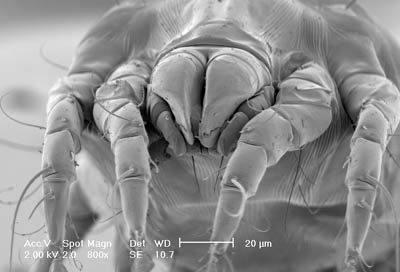
A 2-year, EPSRC-funded project
The Environmental Control of House Dust Mites: Validation of a Combined Hygrothermal Population Model
Starting date: 1st of April 2004
| Home |
|---|
| Publications |
| Research Team |
| International Mite Network |
| Researchers' Page |
| Contact Us |
Can we get rid of house dust mites in the home by controlling temperature and humidity?
1. Living with mites: Getting to know the enemy - Phil Cox
1. How have mites come to colonise our dwellings?
2. Why are house dust mites a health hazard?
3. Why are hygrothermal conditions important for mite control?
4. What are the conditions they need to survive or prosper?
2. Appropriate
strategies for control: An overview of the project - Tadj Oreszczyn
1. What measures can be taken against mites?
2. Do environmental means of control have advantages over other methods?
3. The bed environment: Results of the laboratory
and field studies - Ian Ridley
1. How does the bedroom environment compare with the bed environment
and within the bed?· How much do conditions in beds vary according
to occupant?
2. How do transient conditions compare with steady state?
3. How do hygrothermal conditions in the bed vary over the year?
4. Modelling the bed environment: The simple
steady state model - Stephen Pretlove
1. What are the pros and cons of a simple steady state model?
2. What are the key parameters impacting on the hygrothermal environment
of the bed?
5. Modelling mite populations: Relating population
size to conditions - David Crowther
1. How does one go about modelling the effect of hygrothermal conditions
on mite populations?
2. What are the obstacles to be overcome?
6. Mite experiments: Filling some
of the gaps in knowledge - Toby Wilkinson
1. How many mites can you get in a bed?
2. Do mites move within beds in response to conditions?
7. The transient hygrothermal model: Simulating conditions in beds - Ian Ridley
1. Can all the factors
that might influence bed conditions be taken into
account?
2. How accurately can reality be simulated?
8. The transient mite population model: A
first attempt - David Crowther
1. Do we have enough mite physiology data to base the model on?
2. What are the shortcomings of the model and what is required to overcome
them?


